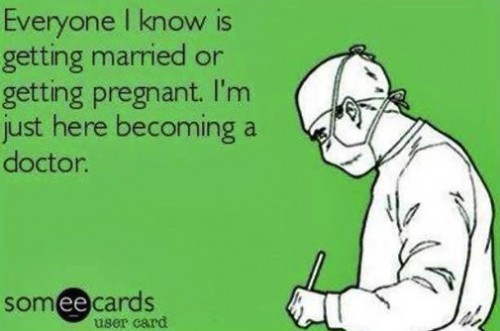
This comes from Mockingfriend Lex Booth.
A. On your whole brain specimens, cut horizontal sections to dissect the dorsal cerebrum bilaterally down to the level of the corpus callosum using ~1cm thick slices. Please keep the blade wet throughout this lab.
I’m nearing the end of my first year in medical school, and the other day I dissected a brain. For those of you who might be wondering, I’d say the consistency lands somewhere between tofu and Jello, but apparently the formaldehyde makes everything look and feel different. Either way, that stuff smells nasty.
After a semester of hurrying in the anatomy lab to fulfill each session’s ‘learning objectives’ (a phrase worse than formaldehyde), the mystery and awe of the experience have largely subsided since that first incision. Now when we have lab we make some cuts, point to some arteries and stuff and then get out. Efficiency is key, and there is little time to reflect on life and death when the hippocampus remains to be seen. The instructions above could be rewritten along more poetic lines: “take your formerly alive and functioning brain, a brain once responsible for someone else’s entire conscious life, and slice it like a ball of fresh mozzarella until you have exposed all of its owner’s memories and idiosyncrasies.” Apparently the laboratory is the wrong place for the imagination to find expression. Science!
Of course, learning anatomy would be quite challenging without the ability to postpone morbid thoughts or find some emotional distance from the cadavers filling the room. But that pendulum can swing pretty far. Our brains are really good at detaching and protecting us from uncomfortable feelings (“I see dead people”). We adopt jargon, we intellectualize our subject matter, we embrace the busyness of our work against the clock, and we add a teaspoon of black humor for flavor. One might think working with cadavers would provide you with more acceptance of our mortality, but that has not been my experience 100% of the time…
How can I think about dying while I have to dissect a dead person?! “This will never be me,” I tell myself with a scalpel in hand. Despite these subconscious rationalizations, no amount of anatomical knowledge can save us from our body’s inevitable failure. You can study all you want, but death is the practical exam that cannot be passed.
Paul’s words about ‘awaiting the new body’ have new significance for me after learning a bit about the one we have now (2 Cor. 5). A sense of tragedy comes each time I unzip the bag and realize again that the cadaver inside is indeed still dead. She is a visceral reminder about the groaning and burdens of mortality that Paul describes. Allowing ourselves to feel the sting of death is uncomfortable, but in those moments when we don’t look away from it or use big words to talk around it, we can then find hope in something more permanent than ourselves: “For we know that if the earthly tent we live in is destroyed, we have a building from God, an eternal house in heaven, not built by human hands.” Amen to that, and this:

COMMENTS
Leave a Reply













